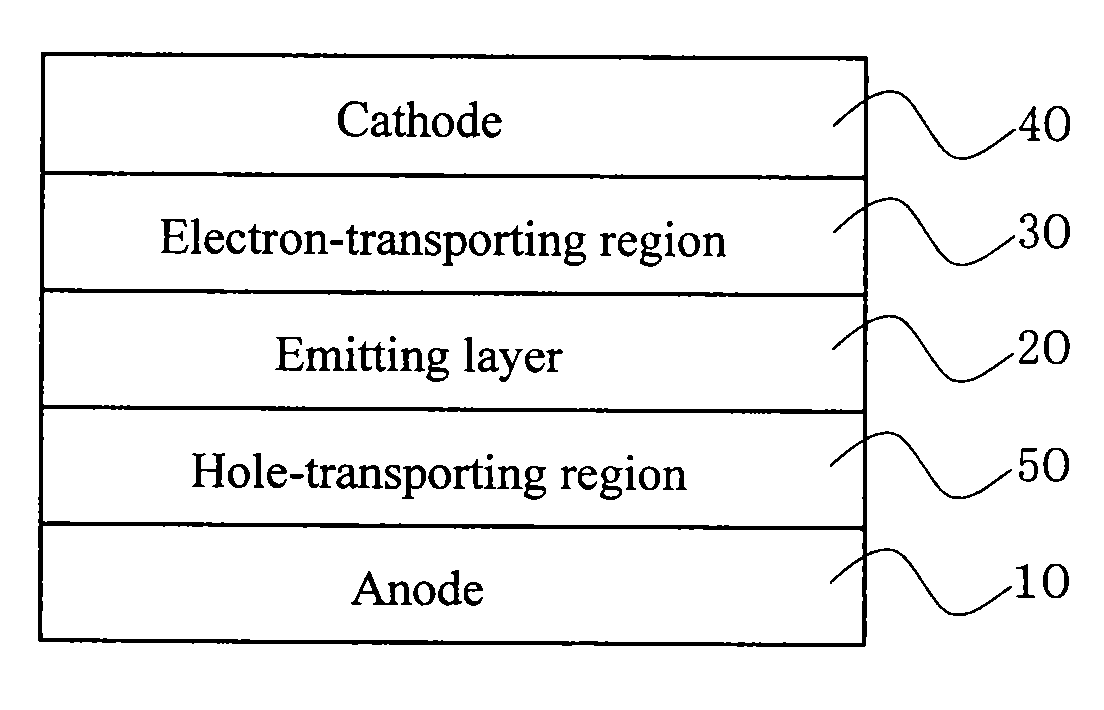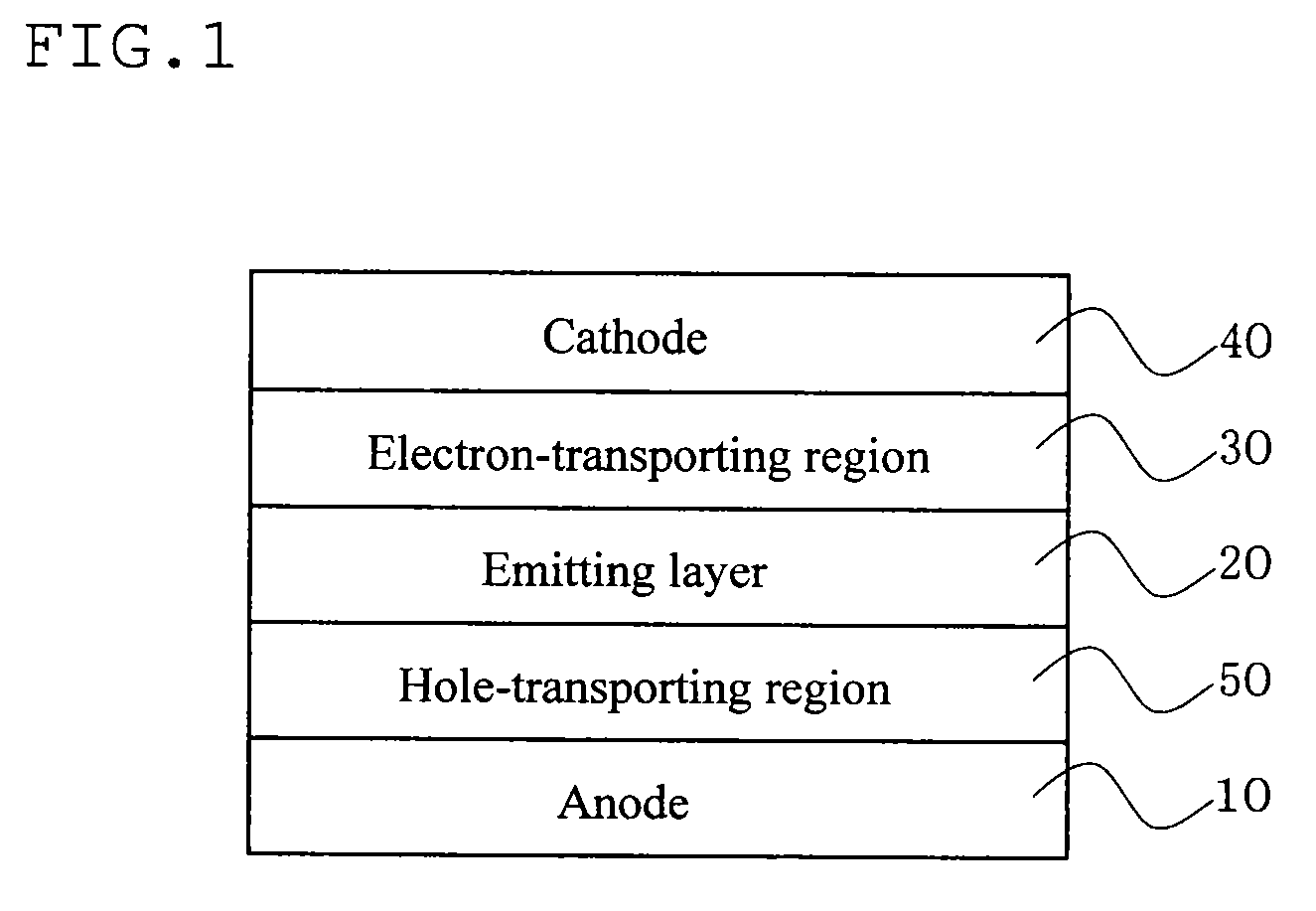Organic electroluminescent device
an electroluminescent device and organ technology, applied in the field of organic electroluminescence devices, can solve problems such as efficiency improvement, and achieve the effect of high efficiency and efficient inducing the ttf phenomenon
- Summary
- Abstract
- Description
- Claims
- Application Information
AI Technical Summary
Benefits of technology
Problems solved by technology
Method used
Image
Examples
first embodiment
[0049]The invention utilizes the TTF phenomenon. First, an explanation is made of the TTF phenomenon.
[0050]Holes and electrons injected from an anode and a cathode are recombined with an emitting layer to generate excitons. As for the spin state, as is conventionally known, singlet excitons account for 25% and triplet excitons account for 75%. In a conventionally known fluorescent device, light is emitted when singlet excitons of 25% are relaxed to the ground state. The remaining triplet excitons of 75% are returned to the ground state without emitting light through a thermal deactivation process. Accordingly, the theoretical limit value of the internal quantum efficiency of a conventional fluorescent device is believed to be 25%.
[0051]The behavior of triplet excitons generated within an organic substance has been theoretically examined. According to S. M. Bachilo et al. (J. Phys. Chem. A, 104, 7711 (2000)), assuming that high-order excitons such as quintet excitons are quickly retu...
second embodiment
[0192]The device of the invention may have a tandem device configuration in which at least two organic layer units including emitting layers are provided. An intermediate layer (intermediate conductive layer, charge generation layer or CGL) is provided between the two emitting layers. An electron-transporting region can be provided in each unit. At least one emitting layer is a fluorescent emitting layer and the unit including the emitting layer satisfies the above-mentioned requirements. Specific examples of stack order are given below. The following emitting layer may be a multilayer stack of emitting layers or one organic layer unit including a carrier blocking layer of a third embodiment described later.
[0193]Anode / fluorescent emitting layer / intermediate layer / fluorescent emitting layer / blocking layer / cathode
[0194]Anode / fluorescent emitting layer / blocking layer / intermediate layer / fluorescent emitting layer / cathode
[0195]Anode / fluorescent emitting layer / blocking layer / intermediate...
third embodiment
[0202]In this embodiment, an anode, a plurality of emitting layers, an electron-transporting region, and a cathode are provided in sequential order, and a carrier blocking layer is provided between two of the emitting layers. The emitting layer in contact with the carrier blocking layer is a fluorescent emitting layer satisfying the above-mentioned requirements.
[0203]As the preferred configuration of the organic EL device according to this embodiment, there can be given the configuration as disclosed in Japanese Patent No. 4134280, US2007 / 0273270A1 and WO2008 / 023623A1, and, specifically, the configuration in which an anode, a first emitting layer, a carrier blocking layer, a second emitting layer and a cathode are sequentially stacked, and an electron-transporting region having a blocking layer for preventing diffusion of triplet excitons is further provided between the second emitting layer and the cathode. Here, the carrier blocking layer means a layer to control the carrier injec...
PUM
| Property | Measurement | Unit |
|---|---|---|
| peak wavelength | aaaaa | aaaaa |
| current efficiency | aaaaa | aaaaa |
| electric field intensity | aaaaa | aaaaa |
Abstract
Description
Claims
Application Information
 Login to View More
Login to View More - R&D
- Intellectual Property
- Life Sciences
- Materials
- Tech Scout
- Unparalleled Data Quality
- Higher Quality Content
- 60% Fewer Hallucinations
Browse by: Latest US Patents, China's latest patents, Technical Efficacy Thesaurus, Application Domain, Technology Topic, Popular Technical Reports.
© 2025 PatSnap. All rights reserved.Legal|Privacy policy|Modern Slavery Act Transparency Statement|Sitemap|About US| Contact US: help@patsnap.com



